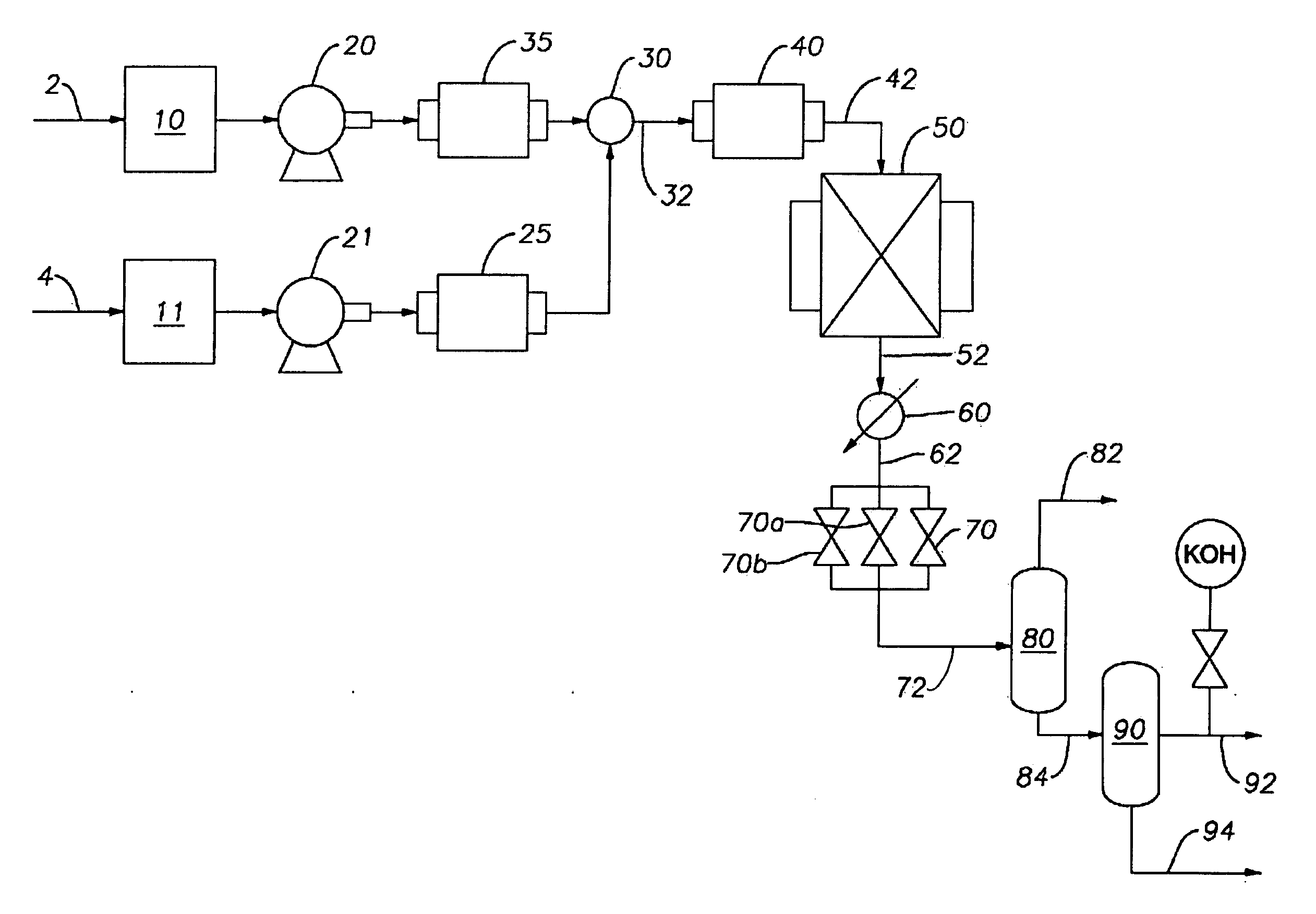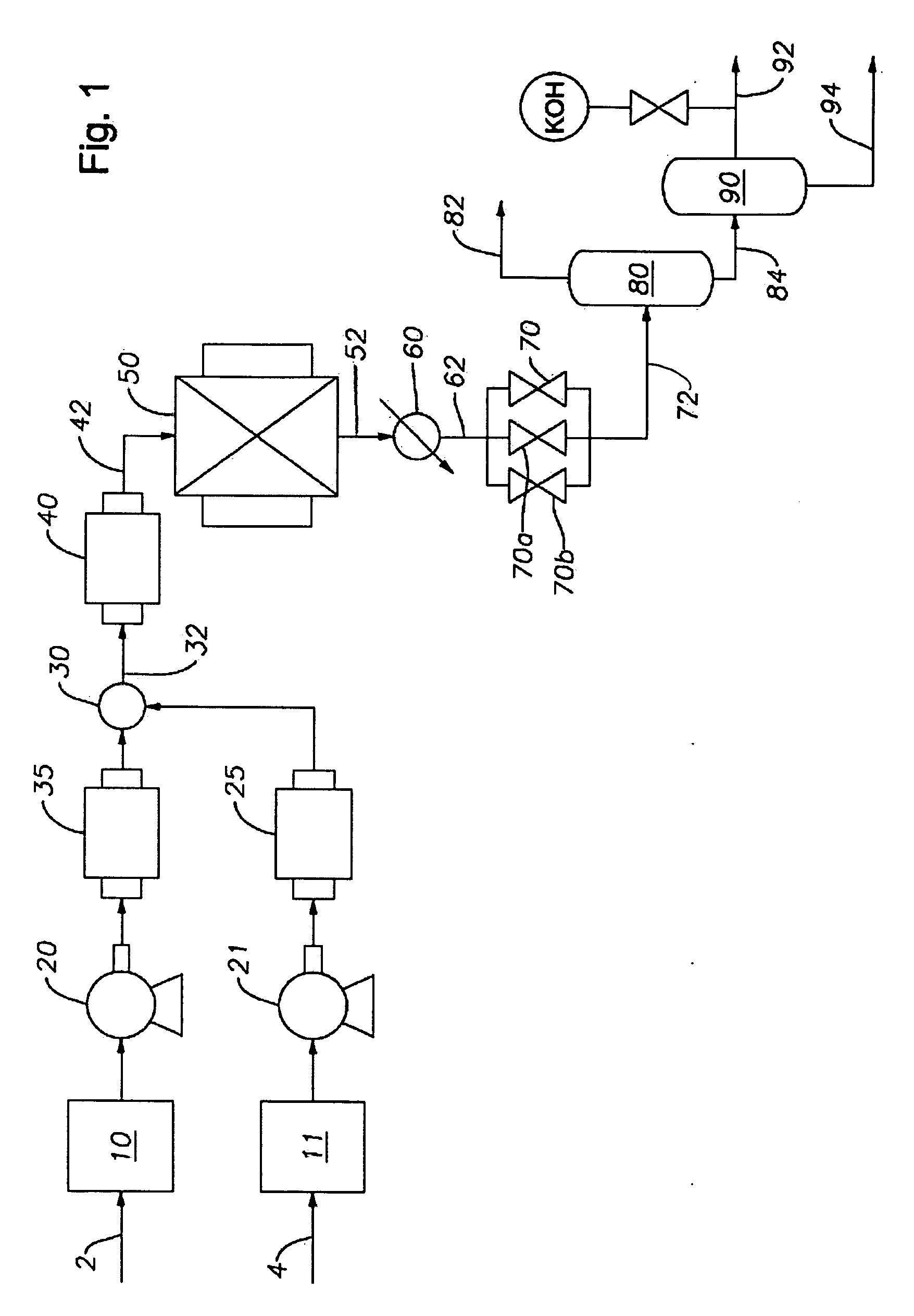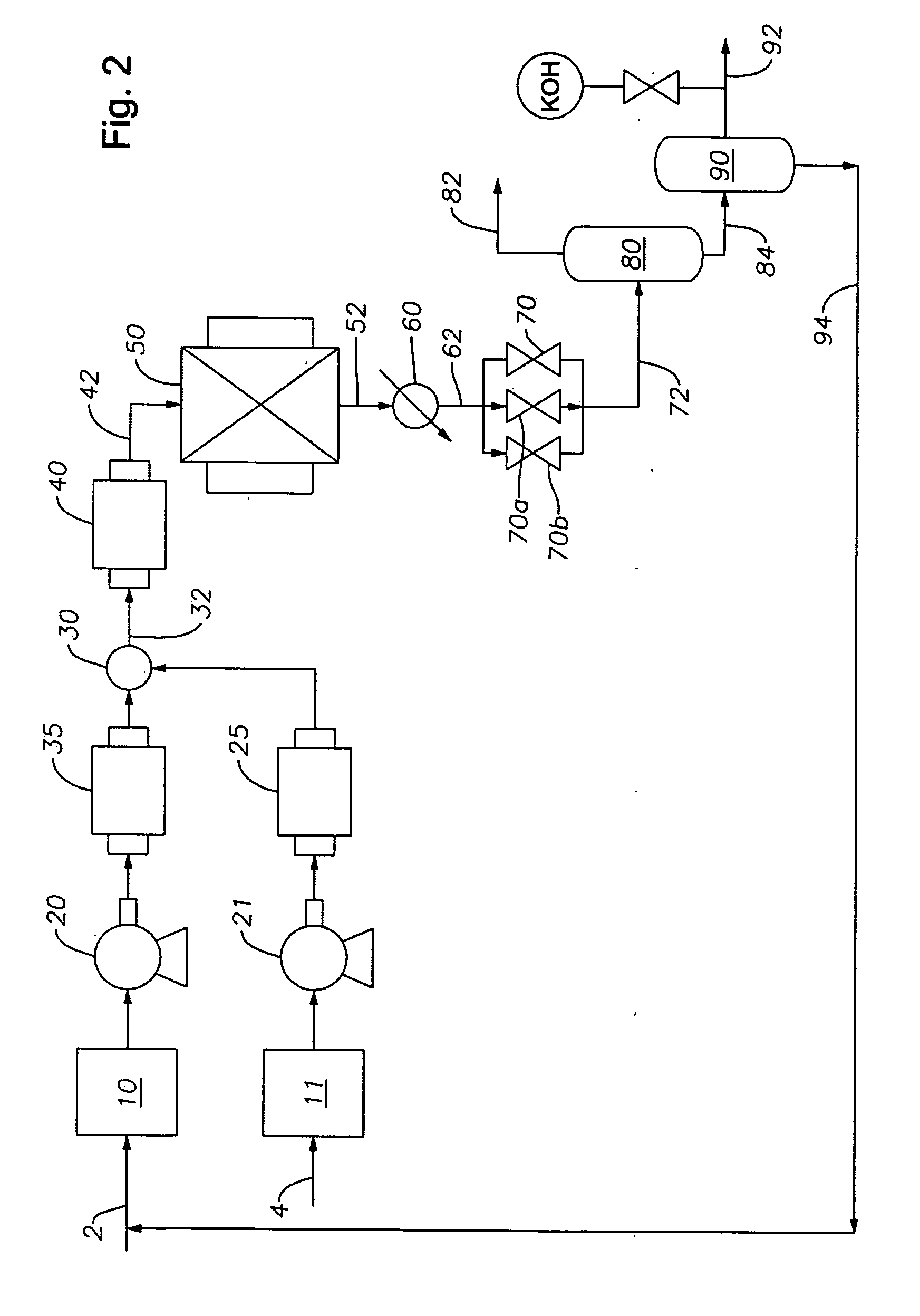Process to reduce acidity of crude oil
a crude oil and acidity reduction technology, applied in the field of reducing the acidity of highly acidic crude oil, can solve the problems of increasing the cost of crude oil upgrading, so as to reduce the corrosion of metal surfaces and reduce the cost of crude oil deacidification.
- Summary
- Abstract
- Description
- Claims
- Application Information
AI Technical Summary
Benefits of technology
Problems solved by technology
Method used
Image
Examples
example 1
[0059]The process of the present invention is further demonstrated by the following illustrative embodiment which does not limit the claims of the present invention. Illustrative embodiment data represents expected results.
[0060]Highly acidic crude oil to which this method is applicable includes Malim oil, produced by PETROBRAS, exemplary properties of which are listed in Table 1.
TABLE 1PropertyValueDensity, ° API19.2Sulfur, Total Weight %0.78Solid wastes, weight %0.012Total acidity (mg KOH / g)1.26Asphaltenes, weight %2.6Nitrogen, weight %0.49Vanadium, wt ppm25Nickel, wt ppm20
[0061]The highly acidic crude oil having properties of Table 1 can be processed by the method of the present invention. Highly acidic crude oil is pumped to about 25 MPa and pre-heated to around 50° C. by surrounding crude oil feeding line with electric heater. Water feed line is passed through heat exchanger and then through electric furnace and surrounded with thermal insulator. Crude oil and water streams are...
PUM
| Property | Measurement | Unit |
|---|---|---|
| temperature | aaaaa | aaaaa |
| pressure | aaaaa | aaaaa |
| pressurized temperature | aaaaa | aaaaa |
Abstract
Description
Claims
Application Information
 Login to View More
Login to View More - R&D
- Intellectual Property
- Life Sciences
- Materials
- Tech Scout
- Unparalleled Data Quality
- Higher Quality Content
- 60% Fewer Hallucinations
Browse by: Latest US Patents, China's latest patents, Technical Efficacy Thesaurus, Application Domain, Technology Topic, Popular Technical Reports.
© 2025 PatSnap. All rights reserved.Legal|Privacy policy|Modern Slavery Act Transparency Statement|Sitemap|About US| Contact US: help@patsnap.com



